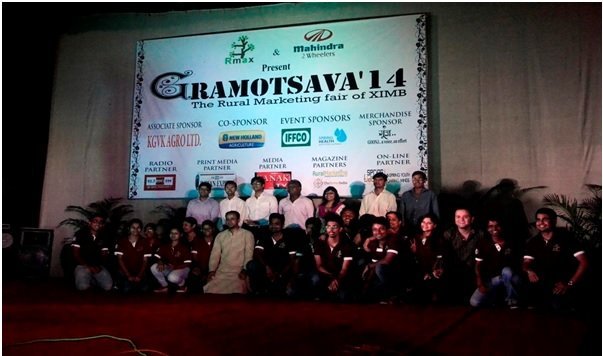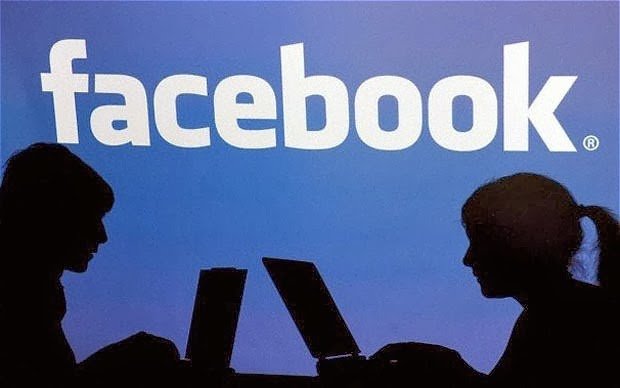Welcome to the generation of Millennials! This tech savvy, achievement oriented Gen Y has its Smartphone as the center of its internet universe. Interestingly, this generation of digital natives is also the primary target of most e-commerce platforms. The major strategic change in the industry has been the shift from e-commerce to m-commerce. With India’s largest e-commerce firm Flipkart Ltd as well as its unit Myntra shutting down their desktop and mobile website so as to become an app only shopping platform, the dynamics of online shopping and accessing and consuming internet services is undoubtedly on the verge of transformation.

Source: Purl,S (2015) State of mobile phones in 2015, Available at: http://www.gadgetbridge.com/news/state-of-mobile-phones-in-2015-infographic/383/.
This transformation is a viable switch for the fast developing e-commerce industry due to numerous reasons. As stated by panelists in Apps India Conference 2015, the usage of mobile apps in the country has risen at an average rate of 131% and the number of smartphone holders using mobile apps of e-commerce websites has increased from 21% to a mammoth 54% in a period of just one year! Along with the seamless and hands on experience provided by apps to the consumers, it also greatly benefits the company by streamlining costs. Maintaining a website, targeted marketing, advertising, collecting relevant user data and reaching out to consumers- all these costs are greatly reduced by switching to m-commerce. In the changing landscape of e-commerce, mobile apps benefit the company by providing a personalized experience to users leading to brand loyalty along with building their data analytics competencies to serve the user in an improved manner as well as support theirown marketing functions by utilizing the data for customer segmentation. Research over the years has shown that SMS and push notifications have 8 times higher response to consumers as compared to emails, making the shift to m commerce more cost-effective. “Mobile and desktop websites are increasingly becoming more and more irrelevant and Indian consumers have showed that they are adopting the app way faster than consumers in the US and even China,” says Prasad Komapalli, head of the ecommerce platform of Myntra. Though these facts and figures paint a rosy picture, there is a downside as well to this great mobile frogleap.
Myntra, which claims to generate more than 90% of its traffic and 70% of its orders from mobile, witnessed a dip of 10% in its sales just a week after shutting down the website.

Source: Mehta,J (2015) E-commerce companies are quickly shutting down websites. Where is mobile web heading?, Available at: http://yourstory.com/2015/04/future-of-mobile-web/ .
Doing simple mathematics on the above data indicate that just 10% of Myntra’s traffic (from desktop) help generate a staggering 30% of its sales! Devangshu Dutta, CEO of retail consultancy firm Third Eyesight also says that smaller number of web browsers generating disproportionate amount of sales is an indicator that they are bigger spenders than mobile users which undoubtedly is a negative trade off for the big switch to mobile app interface. The following concern of customers sums up in its entirety the issues they have with app-only approach.

Source:Sathe,G (2015) Taking the Web Out of E-Commerce – Why Indian Companies Are Ditching Their Websites, Available at: http://gadgets.ndtv.com/apps/features/taking-the-web-out-of-e-commerce-why-indian-companies-are-ditching-their-websites-678591 .
Also, several users are not very comfortable making payments through apps and would like to consider their options carefully through several sites before making a purchase. In India, there is still a sizeable population of smartphone users whose idea of mobile internet is usage of basic services and not making purchases via apps. Many desktop website features are difficult to replicate in an app thereby leading to companies very often pushing the users to download their app by promising them lucrative discounts, which can in turn lead to a dip in their profits. Along with this, the broadband and PC penetration is considerably high in India due to which e-commerce matured on the web first, way before the smartphone boom. Another issue is that Apple and Google control 96% of the app marketplace which may create problems for smaller app innovators in the future.
Other major strategic changes include the entry of B2B players in the online industry. The major reasons for this upheaval have been the development of technology and the modification in the way business is being governed by the various laws. B2B are more planned and have a longer term whereas B2B is more emotional as it deals with impacting consumer behavior and constantly adapting as well as trying to change consumer mindset. B2B has used similar tactic of B2C like utilizing similar business portals and tools which has it a strong channel. Given the support of technology, they have started dealing with customers themselves following a model known as B2B2C sales model. By going to the customers themselves they are creating an image for their brand by improving customer relationship. With the evolution of B2B, companies are now trying to solve the issue of channel conflict. Another challenge being faced is managing logistical support, and understanding local customers and thereby penetrating local markets. As per experts, there would be a perceived change in the Indian e-commerce industry whereby Indian companies would be following e-commerce firms across the globe, as it is estimated that over $6 billion e-commerce market in India will see IPO gaining transaction and a number of e-commerce firms are lobbying hard with SEBI to seek relaxation in IPO norms.
These remarkable changes in the e-commerce industry are the first step in the long journey of revolutionizing etail landscape and there are opportunities galore. In ‘Technology Media and Telecommunications India Predictions 2015,’ a study by Deloitte, it listed that there will be ample prospects for more vertically focused m-commerce companies, as well as large prospective for ‘sharing economy’ mobile companies similar to Uber in user as well as enterprise marketplaces. This paradigm shift in the online retail industry can be considered a bold move with a promising future, but it has its fair share of risks associated as well. In the future of the bizarre world of Indian e-commerce, having a desktop presence can act as a big differentiator when every other company would launch an app. After all, how many apps can be saved in the limited space of a smartphone? Thus this shift to mobile commerce can be a game changer for the online retail industry provided it does not shift the focus away from e-commerce and provide consumers a choice in the way they wish to connect to internet and explore the array of options in online retail.
REFERENCES
- Sathe,G (2015) Taking the Web Out of E-Commerce – Why Indian Companies Are Ditching Their Websites, Available at: http://gadgets.ndtv.com/apps/features/taking-the-web-out-of-e-commerce-why-indian-companies-are-ditching-their-websites-678591 (Accessed: 1st October 2015).
- Mehta,J (2015) E-commerce companies are quickly shutting down websites. Where is mobile web heading?,Available at: http://yourstory.com/2015/04/future-of-mobile-web/ (Accessed: 1st October).
- Indo-Asian News Service (2015) ‘Indian Mobile App Usage Grows 131 Percent’, Available at: http://gadgets.ndtv.com/apps/news/indian-mobile-app-usage-grows-131-percent-730070 (Accessed: 1st October).
- Natanson,E (2015) India’s mobile commerce revolution, Available at: http://yourstory.com/2015/07/mobile-commerce-revolution/ (Accessed: 1st October).
- Rai,S (2015) In Global E-commerce First, India’s Largest Fashion Portal Myntra Ditches Website, Goes Mobile-only, Available at: http://www.forbes.com/sites/saritharai/2015/05/12/in-global-first-indias-largest-fashion-portal-myntra-ditches-website-goes-mobile-only/ (Accessed: 1st October).
- Sharma,S (2015) The Big Switch: E-Commerce Giants Take the ‘App Only’ Route, Available at: http://www.thequint.com/technology/2015/05/15/the-big-switch-e-commerce-giants-take-the-app-only-route (Accessed: 2nd October).
- Agarwal,N (2015) E-Commerce: Does it make any sense to close the online portal and become a purely mobile/app based eCommerce company (i.e. Myntra)?, Available at: http://www.quora.com/E-Commerce/Does-it-make-any-sense-to-close-the-online-portal-and-become-a-purely-mobile-app-based-eCommerce-company-i-e-Myntra (Accessed: 2nd October).
- Raj,S (2015) Why is Myntra taking such a bold move of shutting its own website from 15th May 2015?, Available at: http://www.quora.com/Why-is-Myntra-taking-such-a-bold-move-of-shutting-its-own-website-from-15th-May-2015 (Accessed: 2nd October).
- Mallya,H and Soni,A (2015) From mobile-first to app-only, what makes Myntra confident of the future of m-commerce?, Available at: http://yourstory.com/2015/05/myntra-app-only/ (Accessed: 2nd October).
- Sawant,N (2015) Flipkart to become app-only platform; to shut down mobile website, Available at: http://tech.firstpost.com/news-analysis/flipkart-to-become-app-only-platform-to-shut-down-mobile-website-259744.html (Accessed: 2nd October).
- Dalal,M (2015) ‘Flipkart, Myntra’s app-only move draws mixed reactions’, Mint, 22nd August, p. http://www.livemint.com/Industry/v6SCQhhl94uriMLM3Qev6N/Flipkart-Myntras-apponly-move-draws-mixed-reactions.html
- Sachitanand,R (2015) ‘Why e-commerce firms are rapidly shifting focus to mobile phones to lure customers’, The Economic Times, 22nd May, p. http://articles.economictimes.indiatimes.com/2015-03-22/news/60369543_1_quikr-pranay-chulet-urban-ladder
- Dalal,M (2015) ‘Flipkart moves towards becoming app-only platform’, Mint, 22nd August, p. http://www.livemint.com/Industry/J9VeQxowSOlHU8ZMUParUL/Flipkart-moves-towards-becoming-apponly-platform.html.
The article has been written by @aayush_gandhi and Jaishree Charan. They are presently pursuing their MBA from Xavier Institute of Management, Bhubaneshwar.
Tags: ecommerce flipkart retail strategicYou might like reading:

Gramotsava at XIMB: Rural Marketing Festival
It’s the season of festivities and Gramotsava at XIMB goes on to epitomise celebration and colour. It started all the way back in 2006 as a flagship initiative of RMAX (Rural Management Association of XIMB) and has only been growing bigger with every passing year. The main intent of RMAX is to connect the rural people with the mainstream masses […]

Why Facebook will lose out in the long run?- Part I
Facebook, the world’s most popular social network, has recently eclipsed Amazon.com in terms of market capitalization. For a company that was started hardly a decade back, that is quite an achievement. Facebook today has over 1 billion registered users, making it the third most populous nation after China and India and it continues to grow at a significant rate. However […]






























